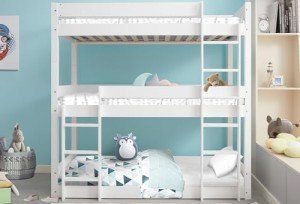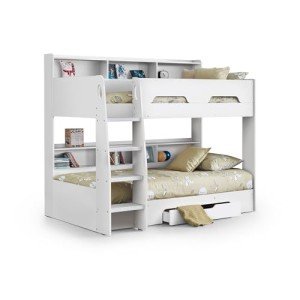Bunk beds have long been a popular option amongst moms and dads seeking to enhance space in their kids's bed rooms. With benefits that surpass their compact design, bunk beds offer a fun and functional sleeping plan while encouraging sibling bonding and cultivating imagination. In this detailed guide, we check out numerous elements of bunk beds for kids, including security considerations, various styles offered, and suggestions for choosing the best one for your family.
Bunk beds are designed to stack one bed on top of another, using vertical space to create more room for play and storage. They are especially beneficial for families with several children or restricted bedroom space. In addition, they supply a daring sleeping environment that children typically take pleasure in.

When selecting a bunk bed for kids, security needs to be the top concern. The following features are essential for guaranteeing a protected sleeping environment:
Bunk beds can be found in a variety of designs, permitting moms and dads to select one that complements their child's space decor while conference particular requirements. Below are some popular styles:
| Bunk Bed Style | Description | Best For |
|---|---|---|
| Traditional | Timeless style with two stacked beds | Requirement bedroom setups |
| Loft Bed | Raised bed with usable space below | Research or play areas |
| L-Shaped | Bunk beds set up in an L-shape | Corner areas |
| Twin over Full | Twin bed on top, complete bed below | Different age brother or sisters |
| Triple Bunk | Three stacked beds | Large households or slumber parties |
When searching for the perfect bunk bed, think about the following aspects to guarantee you make an informed choice:
Generally, kids aged 6 and older should have the ability to securely oversleep the top bunk, though you need to always consider your kid's maturity level.
It is not advisable for toddlers or really young children to oversleep the leading bunk due to the danger of falling.
Inspect the bed frequently for any signs of wear and tear, tightening up screws, and cleaning up the bed mattress to ensure extended safety and resilience.
Many bunk beds are designed to be convertible, allowing you to separate the beds when required. Check the producer's requirements before purchasing.

Use under-bed drawers, shelves, or lofted styles to develop additional storage options in a room with a bunk bed.
Bunk beds provide a wonderful blend of enjoyable, functionality, and space-saving energy, making them a perfect choice for young households. By thinking about safety features, various designs, and useful elements such as space size and age appropriateness, parents can choose the best bunk bed for their child's needs. With the right choice, bunk beds can transform a bedroom into a wonderful space that motivates play, creativity, and bonding among brother or sisters. Constantly keep in mind to focus on security and maintenance to take advantage of this unique sleeping plan.
No Data Found!
